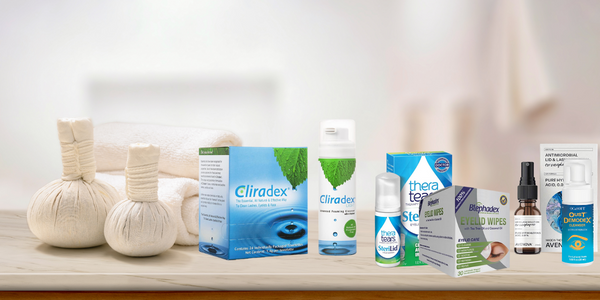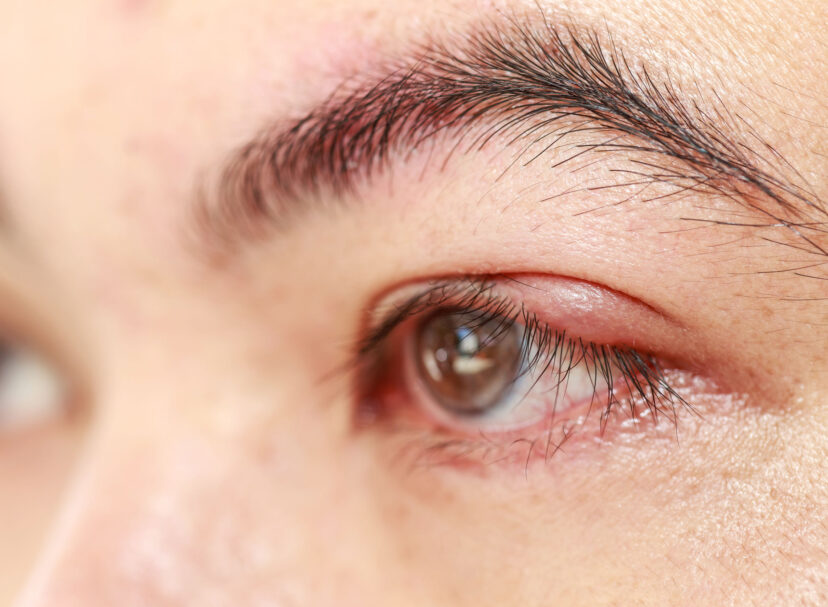In today’s age, the state of healthcare is changing fast. Medical advice, treatment recommendations, and innovative therapies are constantly adapting to the latest research and data.
To keep yourself as healthy as you can be, you want to stay up-to-date! BioTissue, the manufacturer of the Cliradex line of novel over-the-counter eye care products, is pleased to share with you the most recent news and clinical findings on a very common problem: dry eye disease.
Defining Dry Eye
One of the top authorities on dry eye disease is the Tear Film and Ocular Surface Society (TFOS). This is a panel of leading experts on ocular surface diseases, including dry eye. In 2017, TFOS updated the standard definition of dry eye disease to reflect its complexity.
Dry eye disease is now defined as:
“a multifactorial disease of the ocular surface characterized by a loss of homeostasis of the tear film, and accompanied by ocular symptoms, in which tear film instability and hyperosmolarity, ocular surface inflammation and damage, and neurosensory abnormalities play etiological roles.”1
Let’s break that down.
First, dry eye disease can be caused by many factors.
Next, someone can be diagnosed with dry eye if they have a problem producing tears – either they don’t secrete enough liquid, or the proteins and lipids in their tears are impacted in some way. More.
Symptoms of dry eye include tear evaporation that is too fast, high salt concentrations in the eyes, swelling and damage on the surface of the eye, and related irritation such as itching, soreness, stinging, dryness, or tiredness.2
New Understandings of Dry Eye Causes
Dry eye disease is now known to be closely tied to inflammation. Many different issues, like allergies, skin disorders, viral or bacterial infections, or mite infestations may cause inflammation around the eyes. Autoimmune disorders or environmental stressors like pollution, sleep loss, and digital devices may be contributors as well.
Inflammation disrupts the glands that produce the different components of the protective tear film. For this reason, many doctors prefer to refer to dry eye as “dysfunctional tear syndrome.”3
Modern Advancements in Management of Dry Eye
The benefit of greater understanding is that more effective, targeted therapies for dry eye have been developed. As there are many possible causes of dry eye, there are likewise many types of treatments for it. The common goal for all, however, is to restore homeostasis of the tear film. Homeostasis means that all the different molecular parts of your tears are made correctly and are in balance.
For the best results, visit your eye doctor for a thorough evaluation. They can determine the underlying causes of your specific case of dry eye, and ensure you receive the proper treatment. Your doctor might test how much liquid your eyes secrete, how high the salt concentration is, or where specifically there is damage or inflammation.4
Eye doctors use a spectrum of options to address dry eye depending on the severity of the case. For mild cases, basic hygiene and lubricating eye drops are often recommended to manage symptoms.5 Cliradex Light foaming cleanser is a great option for keeping your eyes and skin healthy in mild cases.
For more difficult cases, topical remedies such as anti-inflammatory creams or gentle antibiotics may be used.5 Another good option for moderate to severe cases of dry eye is Cliradex Towelettes. The main ingredient in Cliradex products has been shown to kill Demodex mites and promote healthy eyes.6,7
Finally, in chronic and difficult to manage cases, doctors may prescribe oral medications such as antibiotics or anti-inflammatory drugs.5
Bio-Tissue strives to provide cutting-edge, over-the-counter options for managing dry eye and other eye-related problems based on state-of-the-art science.
For natural, top-quality resources for healthy eyes, check out our Cliradex line of vegan, preservative-free eye care products.
References:
1. Craig JP, Nichols KK, Akpek EK, et al. TFOS DEWS II Definition and Classification Report. The ocular surface. 2017;15(3):276-283.
2. Bron AJ, de Paiva CS, Chauhan SK, et al. TFOS DEWS II pathophysiology report. The ocular surface. 2017;15(3):438-510.
3. Willcox MDP, Argueso P, Georgiev GA, et al. TFOS DEWS II Tear Film Report. The ocular surface. 2017;15(3):366-403.
4. Wolffsohn JS, Arita R, Chalmers R, et al. TFOS DEWS II Diagnostic Methodology report. The ocular surface. 2017;15(3):539-574.
5. Jones L, Downie LE, Korb D, et al. TFOS DEWS II Management and Therapy Report. The ocular surface. 2017;15(3):575-628.
6. Nogueira MN, Aquino SG, Rossa Junior C, Spolidorio DM. Terpinen-4-ol and alpha-terpineol (tea tree oil components) inhibit the production of IL-1beta, IL-6 and IL-10 on human macrophages. Inflammation research : official journal of the European Histamine Research Society [et al]. 2014;63(9):769-778.
7. Tighe S, Gao YY, Tseng SC. Terpinen-4-ol is the Most Active Ingredient of Tea Tree Oil to Kill Demodex Mites. Translational vision science & technology. 2013;2(7):2.




